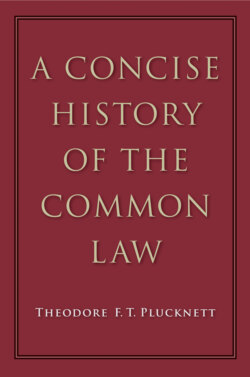Читать книгу A Concise History of the Common Law - Theodore F. T. Plucknett - Страница 59
На сайте Литреса книга снята с продажи.
REFORMS AT THE RESTORATION
ОглавлениеThe movement had its results, however, for Charles II’s reign was in fact a period of legal reform. At the very commencement tenure in chivalry was abolished. This abolition of a great deal of mediaeval law relating to such subjects as wardship, marriage and military tenure was counterbalanced, however, by an increase in complexity in other departments of the law of real property. There may be a certain amount of truth in the suggestion that has several times been made, that periods of civil disturbance have been frequently accompanied by the development of new devices by the conveyancers with a view to tying up property in land so as to put it, as far as possible, beyond the reach of such political accidents as forfeiture and improvident management. Thus the fifteenth-century landowners seem to have resorted to the use as a protection—which the legislature soon defeated, however—against the frequent forfeitures of legal estates attendant upon the Wars of the Roses. So in the seventeenth century the widespread confiscations of royalists’ properties2 during the period of the Commonwealth was accompanied by numerous developments in the art of conveyancing which from this date onward reached an astonishing degree of technicality.
